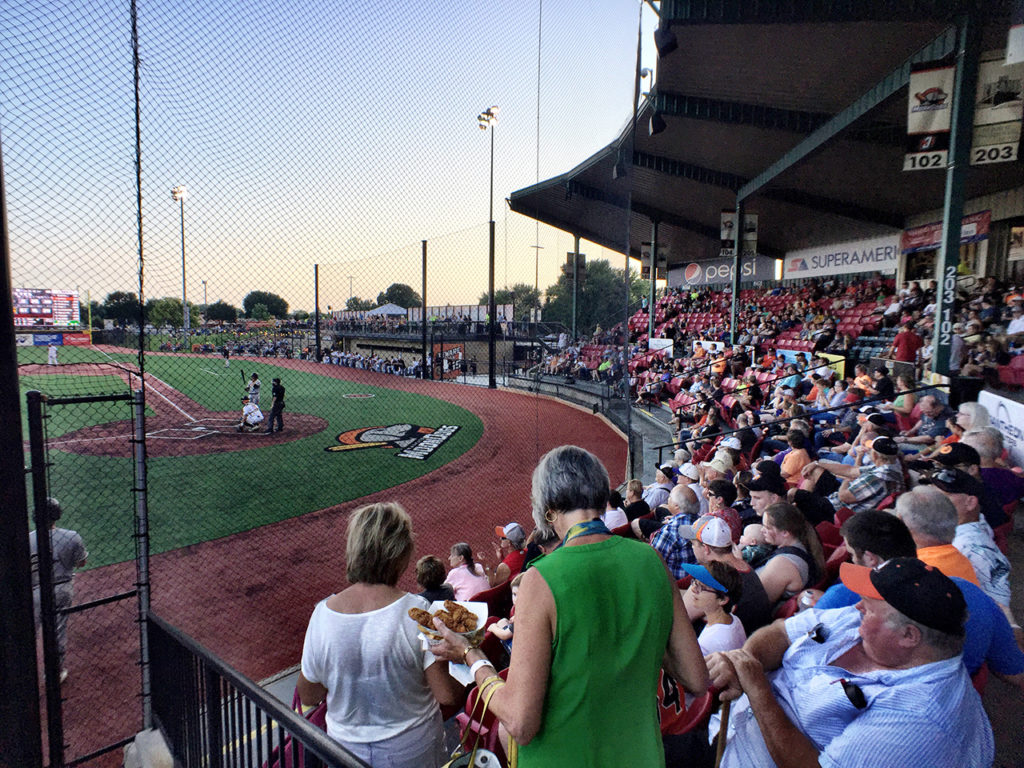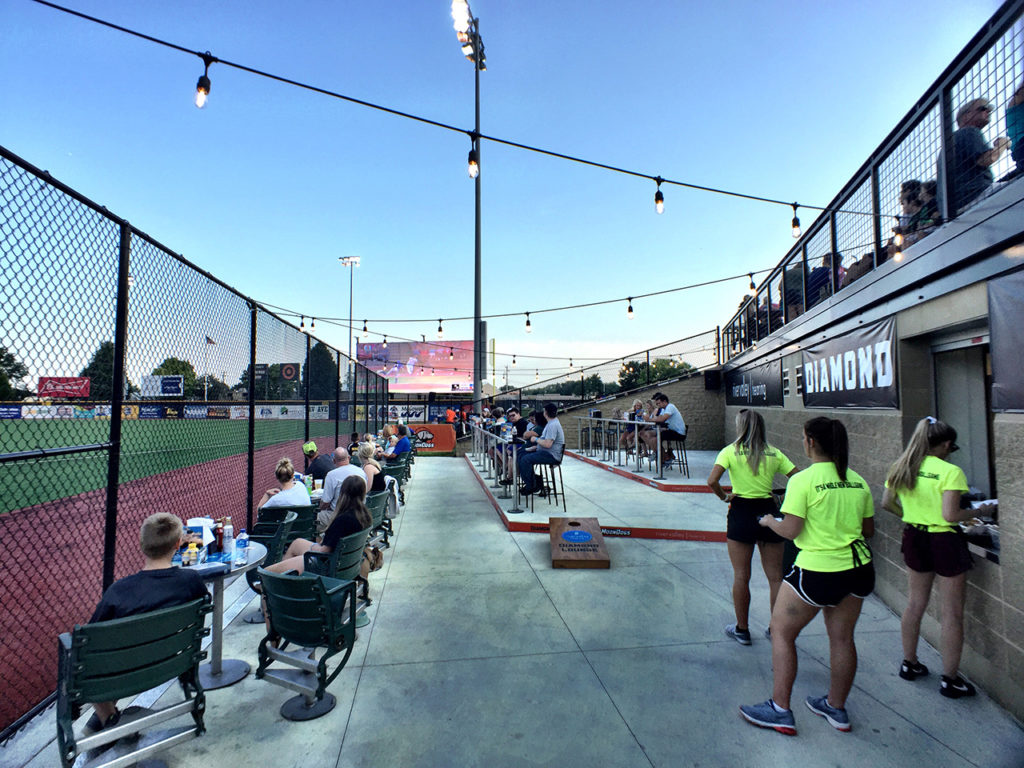We’ve been visiting Franklin Rogers Park since the earliest days of the summer-collegiate Northwoods League, when the Mankato Mashers featured the likes of Curtis Granderson and Paul McAnulty in the lineup circa 2001. Boy, has the place changed since then.
At the time Franklin Rogers Park was a very basic facility: you had the grandstand, dugouts and cages for batting practice, and that was about it, largely unchanged since opening. Franklin Rogers Park launched in 1961 as Key City Park, and by 1966 the ballpark was in the running for a Northern League franchise. When Bismarck-Mandan dropped out of the Northern League at the end of the season, the Mankato Mets were poised to host pro ball.
Despite having two very competitive teams, the Mets never caught the Key City’s imagination, drawing just 20,441 fans in its two seasons. In that brief time span, however, the Mets produced four players who eventually made it to the major leagues (Rich Hacker, Jessie Hudson, Ernie McAnally and Tom Robson). Mike Martin, who has won over 1,900 games in 39 seasons as head coach at Florida State, was a rookie outfielder on the 1967 team. Joe Frazier, who managed the 1968 team, eventually moved up the chain and managed the major league club in 1976 and for 45 games in 1977.
If Martin or those other original Mankato Mets were to return to Franklin Rogers Park, they’d see plenty of things dating back to their playing days as well as plenty of notable upgrades. First, they’d recognize the iconic grandstand, albeit with upgraded seating, a new press box, and an area devoted to management of the new videoboard, also containing the visitor’s radio box. (The videoboard management space requires air conditioning, so this area and the visitor’s radio box stays cool no matter how hot the rest of the ballpark is.)
Otherwise, those original Mankato Mets wouldn’t recognize the totally new ballpark, the result of changes made for the 2018 season. A new clubhouse features plenty of space, individual cubbies, a large flat-screen TV and a couch for lounging. An older concession stand was retained, but above and adjacent to it and the new clubhouse is new high-end seating featuring 27 high tops and rail and table seating in three separate areas, both raised and at the field level, as well as a group area.
Why three? Originally the plan was just for one section of high tops and drink-rail seating along with the group area seating 150. But when presales took off before the season, the decision was made to add additional high tops and table seating on field level. Located right past first base, this new high-end seating is a hit, sold on a season basis.
“We’re really happy with how this area turned out,” said MoonDogs GM Austin Link. “We think the views are among the best in all of baseball.”
A new berm running down the right-field line gives families a chance to spread out; as a plus, the MoonDogs allow fans to bring in their own foldable chairs. It’s a great place to snare some foul balls with great views of the field.
Speaking of the field: it sports a new synthetic turf that includes the batter‘s boxes, home plate and the bullpens beyond the home-run fence in both corners. While purists decry the use of synthetic turf, it has allowed the MoonDogs to complete games that might have been called in the past. The old grass turf was known for having some drainage issues; those are gone.
“We were hit with several days early in the season with some serious afternoon rain,” Link said. “Three hours later we were ready to play – the field was perfectly drained.”
Down the third-base line came another serious upgrade: the old Dog Pound wood deck, used for groups and all-inclusive tickets, was torn down and replaced by a new metal Dog Pound complete with bar tables, shaded seating and plenty of picnic tables. Three levels allow everyone in the Dog Pound to have a good view of the action. And additional restrooms are a relief to all.
Unveiled during our visit: a new 20×50 videoboard from Daktronics, installed in the right-field corner. The installation of the board and the move of the bullpens to the corners led the Moondogs to pull in the home-run fence, leading to an interesting configuration with the fence at 315 in the left field corner (complete with a mini-Green Monster), 320 in the right-field corner, 390 to the far edge of the power alley and over 400 feet to dead center field.
One nice thing about Franklin Rogers Park is its large footprint: while specific areas will get crowded (like the Dog Pound), it’s pretty easy to make your way around the ballpark.
The total cost of the project: $4 million, with the city putting in $3 million and the team $1 million.
Many summer-collegiate ballparks are a mix of old and new, and the upgrades to Franklin Rogers Park show how the best of both worlds can be combined harmoniously. Along with the upgrades to Wausau’s Athletic Park in recent years, we’re seeing some serious advancement in the art of customer service in the summer-collegiate world.
This article first appeared in the Ballpark Digest newsletter. Are you a subscriber? It’s free, and you’ll see features like this before they appear on the Web. Go here to subscribe to the Ballpark Digest newsletter.






